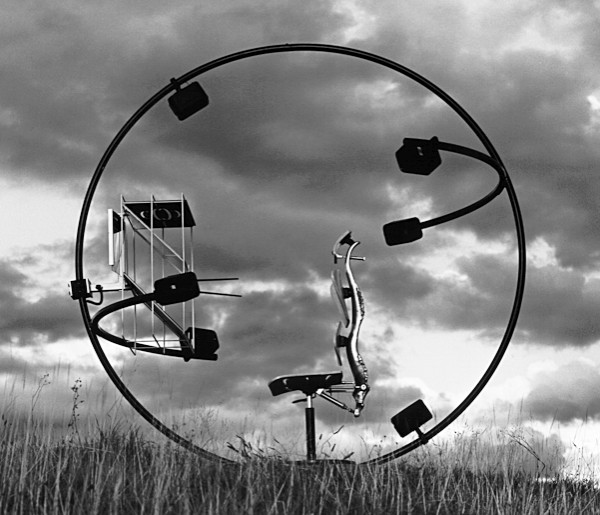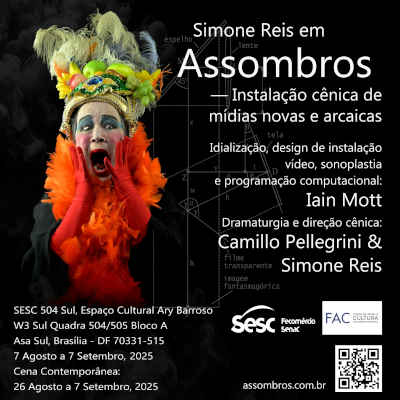Assombros is an installation conceived by new media artist Iain Mott and performer Simone Reis, developed together with playwright Camillo Pellegrini. The collaborative work seeks to integrate the languages of visual, theatrical and sound arts. The result is to make the visitor/spectator experience a unique encounter.
Following the phantasmagorical line defined in O Espelho (The Mirror, 2012) by Reis and Mott, the five modules for the Assombros installation utilize a mixture of ancient and contemporary technologies. These are: Professor Pepper's Ghost – a theatrical and quasi-holographic illusion from the 19th century; techniques arising from the camera obscura of the 15th century; the boîte d'optique (optical box) from 17th-century France; and ambisonic sound, LED mini-reflectors, light tables and embedded computers from the 21st century.
In the dramaturgy of Pellegrini and Reis, the performances that take place inside the optical boxes are based on autobiographical and/or autofictional narratives by Reis, amalgamated with the archetypal characters Nina and Arkadina, both actress characters from the work of Anton Chekhov. In the performances, Reis weaves a poetry full of rural narratives, of colorful flashes of childhood memories, drawn from clippings of her family album. She tells stories and reinvents details in words spoken as one speaks in the countryside and as one feels in the city, from a place that no longer exists.
The viewing cabinets of the 18th and 19th centuries were made as entertainment items for soirées and salons. They offered a primitive form of stereoscopy through a large biconvex lens and a mirror, and gave individuals viewing two-dimensional colored engravings the impression of depth and three-dimensionality, an effect often enhanced with prosceniums. Initially designed to observe colored engravings with three-dimensional effect and perspective views. Over time, the ancient boxes came to portray hauntingly unusual historical events.
In addition to the scenography and two-dimensional performance video of Reis inside the box, dioramas are included to better integrate the image of the ghost – Reis herself – into her three-dimensional environment. LED lighting inside the cabinets (including mini-reflectors and light tables) is dynamically controlled and synchronized with the ghosts recorded on video and, furthermore, ambisonic audio (an advanced form of surround sound using software developed by Mott, called Mosca) is delivered through headphones to promote a sense of immersion in the scene and an association of the spectator with the focal characters.
All of this can be seen through a large lens inserted in the viewfinder cut into the upper part of the box, creating apparently holographic images. Each box will function as an object of encounter and sound and physical propagation, projecting the performer on scene for individual fruition by spectators, like a complete cinema made available to one spectator for "sessions" that last around 4:30 minutes each.
Sponsorship Culture Support Fund of the Federal District State Secretariat of Culture (FAC-DF).










